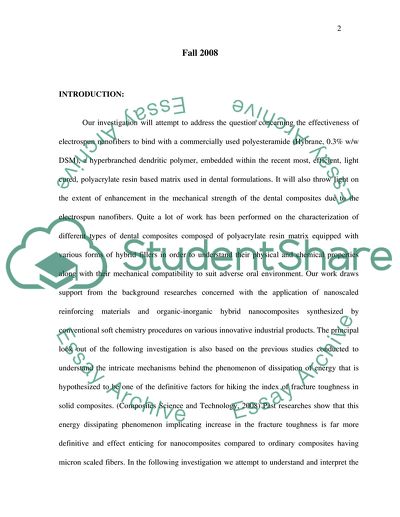Cite this document
(Reinforcement of Dental Composites by Electrospun Nanofibers Research Paper, n.d.)
Reinforcement of Dental Composites by Electrospun Nanofibers Research Paper. Retrieved from https://studentshare.org/technology/1718099-research-proposal-for-a-open-technical-topic
Reinforcement of Dental Composites by Electrospun Nanofibers Research Paper. Retrieved from https://studentshare.org/technology/1718099-research-proposal-for-a-open-technical-topic
(Reinforcement of Dental Composites by Electrospun Nanofibers Research Paper)
Reinforcement of Dental Composites by Electrospun Nanofibers Research Paper. https://studentshare.org/technology/1718099-research-proposal-for-a-open-technical-topic.
Reinforcement of Dental Composites by Electrospun Nanofibers Research Paper. https://studentshare.org/technology/1718099-research-proposal-for-a-open-technical-topic.
“Reinforcement of Dental Composites by Electrospun Nanofibers Research Paper”, n.d. https://studentshare.org/technology/1718099-research-proposal-for-a-open-technical-topic.


